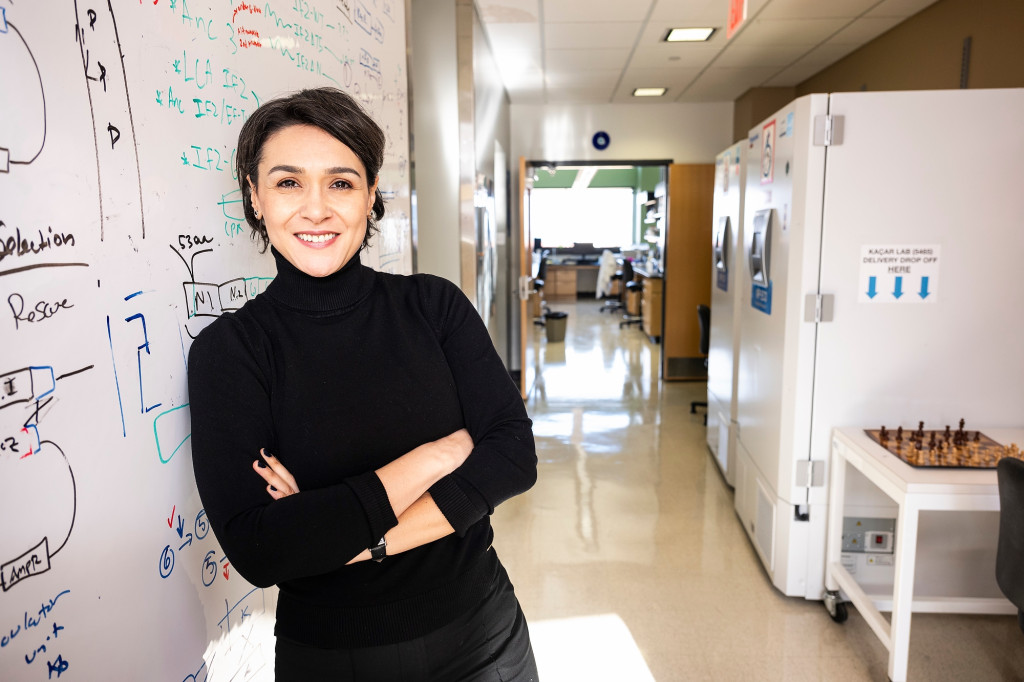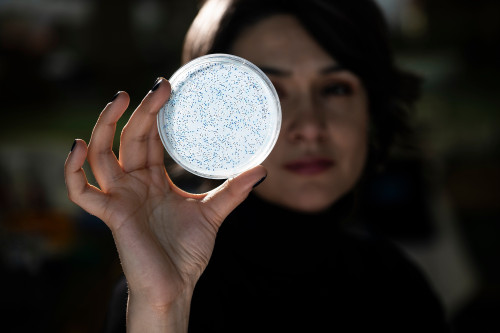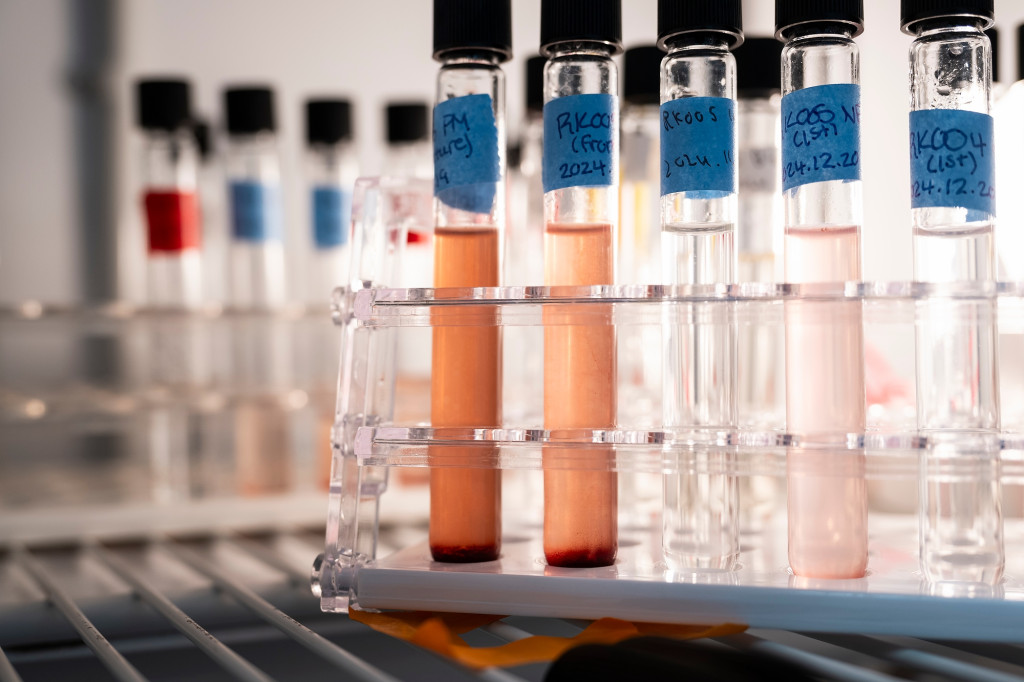Project to explore enzyme behind early evolution of life on Earth

Betül Kaçar, associate professor of bacteriology, is pictured in her research lab in the Microbial Sciences Building. Photo: Jeff Miller
Betül Kaçar, associate professor of bacteriology, likes mysteries. And there is, maybe, no larger mystery than the origins and early evolution of life.
Now, a team of scientists at the University of Wisconsin–Madison led by Kaçar, a pioneer in the field of molecular paleobiology, will explore the paleoenvironments and ancient history of Earth by bridging paleontology, artificial intelligence, synthetic biology and evolution.
The project, “Past as Prelude: Preparing for an Uncertain Future Shaped by Nitrogen,” has received a $1.3 million grant from the W.M. Keck Foundation, and UW–Madison will contribute matching funds.
Kaçar’s UW–Madison team — which includes Brian Pfleger, professor of chemical and biological engineering, and Jean-Michel Ané, professor of plant and agroecosystem sciences and affiliate with the Department of Bacteriology — seeks to, for the first time, experimentally access more than three billion years of molecular diversity to understand how an enzyme known as nitrogenase has persisted through upheavals in atmospheric chemistry and surface temperatures over Earth’s history. The team will collaborate with Martin Steinegger, professor at Seoul National University, who will provide expertise in large-scale sequence data analysis and method development.
Though nitrogen is abundant in the atmosphere, only nitrogenase can “fix” nitrogen to a biologically usable form. This enzyme has arisen only in bacteria. Some nitrogen-fixing bacteria are associated with legume plants such as soybeans and peanuts. There has always been consideration of whether other crops could be engineered to fix nitrogen in order to reduce the amount of fertilizer inputs and enhance sustainability of agricultural systems.
Though nitrogen is abundant in the atmosphere, only nitrogenase can “fix” nitrogen to a biologically usable form. This enzyme has arisen only in bacteria associated with legume plants such as soybeans and peanuts.
“Traditional approaches for reconstructing the history of life depend on the study of geological remains that offer a woefully incomplete picture of ancient life due to their rarity and degree of degradation,” Kaçar explains. “The unique window through which we will explore this history is nitrogenase. Certain critical enzymes, such as nitrogenase, evolved early in the history of life and persisted through these dynamic changes to our planet. It is difficult to overstate their importance.”

Kaçar holds a Petri dish containing the nitrogen-fixing microbe Azotobacter vinelandii (diazotroph) in her research lab. Photo: Jeff Miller
In fact, the functions that these enzymes carry out completely define the productivity limits of all living organisms.
“Nitrogenase is an ideal platform for our investigation,” Kaçar explains. “It is ancient, with its evolutionary history encompassing most of the history of life. It also has strict requirements for its enzymatic activity and occupies a unique space at the limits of biological function and nevertheless persisted through significant changes in Earth conditions.”
It is not known how this enzyme originated, mechanisms by which it functions (humans have yet to mimic this biological design), how its molecular features adapted to the range of environmental conditions experienced throughout Earth history, or whether evolutionary processes have fully explored the biomolecular sequence space that can generate new nitrogenase enzymes.
Kaçar’s team will address these questions by using evolutionary models and high-throughput methods to resurrect and characterize a vast library of extinct and artificial enzyme sequences, and by mapping them to globally significant events in Earth history, including dramatic shifts in surface temperatures such as global glaciations and changes in atmospheric CO2 levels.
Engineering bacteria with ancestral DNA is a fundamentally new methodology that has only been significantly leveraged for biomolecular studies in the last 10 years.
“Our transformative approach will create a whole new sub-discipline combining protein evolution, microbiology and paleobiology,” Kaçar says. “Because of these features and despite many attempts, our approach does not fit into the disciplinary scopes of traditional funding programs and is squarely fit for Keck Foundation support.”
Based in Los Angeles, the W.M. Keck Foundation was established in 1954 by the late W. M. Keck, founder of the Superior Oil Co. The Foundation’s grant making is focused primarily on pioneering efforts in the areas of medical research and science and engineering. The Foundation also supports undergraduate education and maintains a Southern California Grant Program that provides support for the Los Angeles community, with a special emphasis on children and youth.

Microbial solutions are stored in test tubes in a temperature-controlled environment in Betül Kaçar’s research lab. Photo: Jeff Miller
Tags: bacteriology, research




